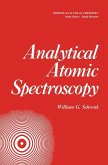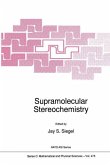The first half of the title of this book may delude the uninitiated reader. The term '"Jahn-Teller effect," taken literally, refers to a special effect inherent in particular molecular systems. Actually, this term implies a new approach to the general problem of correlations between the structure and properties of any molecular polyatomic system, including solids. Just such a new approach, or concept (in some sense, a new outlook or even a new way of thinking), which leads not to one special effect but to a series of different effects and laws, is embodied in the many ( ~ 4000) studies devoted to the investigation and application of the Jahn-Teller effect. The term "vibronic interactions" seems to be most appropriate to the new concept, and this explains the origin of the second half of the title. The primary objective of this book is to present a systematic develop ment of the concept of vibronic interactions and its applications, and to illustrate its possibilities and significance in modern chemistry. In the first three chapters (covering about one-third of the book) the theoretical background of the vibronic concept and Jahn-Teller effect is given. The basic ideas are illustrated fully, although a comprehensive presentation of the theory with all related mathematical deductions is beyond the scope of this book. In the last three chapters the applications of theory to spectro scopy, stereochemistry and crystal chemistry, reactivity, and catalysis, are illustrated by a series of effects and laws.








